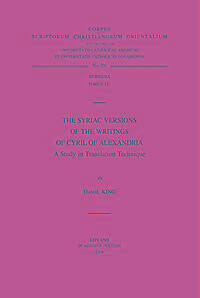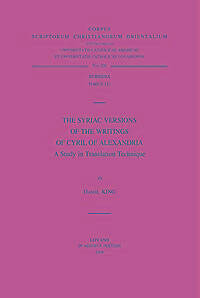
- Afhalen na 1 uur in een winkel met voorraad
- Gratis thuislevering in België vanaf € 30
- Ruim aanbod met 7 miljoen producten
- Afhalen na 1 uur in een winkel met voorraad
- Gratis thuislevering in België vanaf € 30
- Ruim aanbod met 7 miljoen producten
Zoeken
Omschrijving
This study presents an analysis of the Syriac translations of Cyril of Alexandria's Christological works, seeking to locate them in their literary context on the basis of a comparative typology of translation technique and by making full use of Biblical citations and parallel citations in other texts. The texts in question range from the middle of the fifth to the middle of the sixth century and are closely comparable to other contemporary documents. The decades either side of the turn of the sixth century are shown as the key period in which Syriac translators developed a new vision of their language and its capabilities. More widely, the translations in question are used to illuminate parallel developments in late antique culture in matters of textual authority, the exegesis of patristic texts and the development of Florilegia. The Syrian church's new vision of language use can be observed in other walks of life across and represents a typical 'late antique' phenomenon.
Alleen bij Standaard Boekhandel
+ 240 punten op je klantenkaart van Standaard Boekhandel
Beoordelingen
We publiceren alleen reviews die voldoen aan de voorwaarden voor reviews. Bekijk onze voorwaarden voor reviews.












